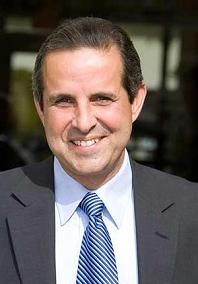 Biodiesel production is going from large-scale to small-scale. Pacific Natural Energy is introducing the BioBox Mini to offer smaller companies efficient and effective biodiesel production through a single 20-foot cargo container.
Biodiesel production is going from large-scale to small-scale. Pacific Natural Energy is introducing the BioBox Mini to offer smaller companies efficient and effective biodiesel production through a single 20-foot cargo container.
With minimal cost and equipment, entry-level customers have the ability to lead the masses towards biodiesel independence. The BioBox Mini can process up to 400,000 gallons per year of ASTM-quality biodiesel and costs less than $250,000. That translates to a ROI of approximately six months, including a production build-up period.
The BioBox Mini includes all the required equipment to start your own complete commercial biodiesel production business:
— PNE 25 SS “Mini” – Turnkey Biodiesel Processor
— 2,750-gallon total capacity WVO filtration/dewatering/storage system
— 400-gallon WVO vacuum suction tank
— One-hundred 55-gallon WVO collection lids
“No one gets left to fend for themselves. We want biodiesel to succeed, and that means every customer must succeed,” says Eric McLeod, PNE’s founder and CEO.
PNE says the BioBox Mini offers a minimum of 400 gallons of biodiesel per 8-hour batch. The company also promises to offer both training and an on-site PNE representative to run the facility for the first several weeks of BioBox operation.
PNE has a YouTube video to help customers understand how their products can help them become biodiesel-independent:


 Back in March John posted info that the shipping giant
Back in March John posted info that the shipping giant  FCCC is the first manufacturer in the industry to introduce hybrid commercial vehicles into fleet operations, with over 160 HEVs in service since 2004, in addition to over 1,000 CNG-fueled chassis in service since 2000.
FCCC is the first manufacturer in the industry to introduce hybrid commercial vehicles into fleet operations, with over 160 HEVs in service since 2004, in addition to over 1,000 CNG-fueled chassis in service since 2000. In a move to expand its renewable wind energy development, while reducing carbon emissions, Minnesota Power has announced a plan to buy a North Dakota power line and use that infrastructure to move wind-generated electricity.
In a move to expand its renewable wind energy development, while reducing carbon emissions, Minnesota Power has announced a plan to buy a North Dakota power line and use that infrastructure to move wind-generated electricity. One of the fixtures of Boston Harbor are the World War II-era amphibious landing vehicles, affectionately known as “ducks.” Those tourist-carrying ducks are going to have more than water rolling off their backs… they’ll have carbon emissions rolling away as they switch to cleaner burning biodiesel.
One of the fixtures of Boston Harbor are the World War II-era amphibious landing vehicles, affectionately known as “ducks.” Those tourist-carrying ducks are going to have more than water rolling off their backs… they’ll have carbon emissions rolling away as they switch to cleaner burning biodiesel. The $300,000 vehicles initially will run on a B5 biodiesel fuel blend that’s 5 percent vegetable oil, according to director of vehicle maintenance Tony Cerulle. The vehicles’ manufacturer will only cover the one-year warranty for their diesel engines if that mix is used.
The $300,000 vehicles initially will run on a B5 biodiesel fuel blend that’s 5 percent vegetable oil, according to director of vehicle maintenance Tony Cerulle. The vehicles’ manufacturer will only cover the one-year warranty for their diesel engines if that mix is used. A Colorado biodiesel producer is following its commitment to making the green fuel by moving its headquarters into a green building. Blue Sun Biodiesel has moved into one of just 26 Leadership and Energy and Environmentalism Design (LEED)-certified buildings in the world.
A Colorado biodiesel producer is following its commitment to making the green fuel by moving its headquarters into a green building. Blue Sun Biodiesel has moved into one of just 26 Leadership and Energy and Environmentalism Design (LEED)-certified buildings in the world.  IEA estimates that biofuels will account for nearly two-thirds of the non-OPEC oil supply growth this year, or more than 1.5 million gallons per day.
IEA estimates that biofuels will account for nearly two-thirds of the non-OPEC oil supply growth this year, or more than 1.5 million gallons per day. Sen. John Thune (R-SD) plans to introduce a bill this week that would let buyers of cars or trucks capable of running on up to 85 percent ethanol enriched fuel claim a $1,000 tax credit.
Sen. John Thune (R-SD) plans to introduce a bill this week that would let buyers of cars or trucks capable of running on up to 85 percent ethanol enriched fuel claim a $1,000 tax credit.  According to Lampert, NEVC has discussed the idea in the past considering the federal income tax credits that are provided to vehicles that are capable of operating on propane, natural gas, electricity, and hybrid vehicles but had decided not to push the issue since “automakers producing FFVs don’t currently add additional costs to the retail price of these products.”
According to Lampert, NEVC has discussed the idea in the past considering the federal income tax credits that are provided to vehicles that are capable of operating on propane, natural gas, electricity, and hybrid vehicles but had decided not to push the issue since “automakers producing FFVs don’t currently add additional costs to the retail price of these products.” According to the
According to the  Unlike sugarcane, sweet sorghum can be grown in many different areas. It is the world’s fifth largest grain crop—behind rice, corn, wheat and barley – grown on more than 107 million acres in 99 countries with United States, Nigeria, India, China, Mexico, Sudan and Argentina being the leading producers.
Unlike sugarcane, sweet sorghum can be grown in many different areas. It is the world’s fifth largest grain crop—behind rice, corn, wheat and barley – grown on more than 107 million acres in 99 countries with United States, Nigeria, India, China, Mexico, Sudan and Argentina being the leading producers. The City of Miami is moving forward with plans to run a thousand of its vehicles on biodiesel.
The City of Miami is moving forward with plans to run a thousand of its vehicles on biodiesel.